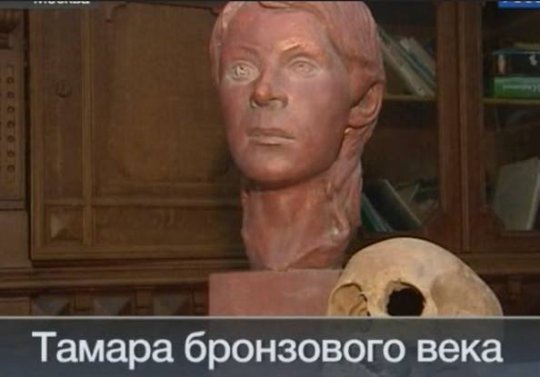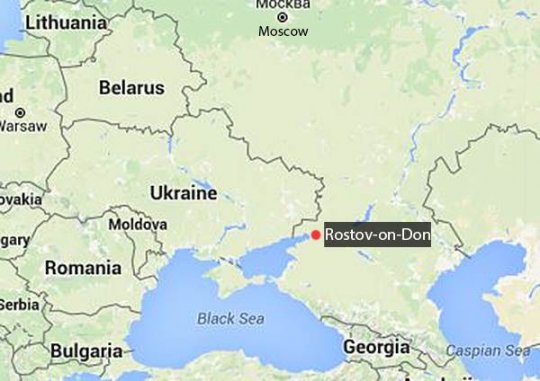

საზოგადოებრივი როსტოვში უძველესი პროტოქართული სამარხი აღმოაჩინეს 2019, 12 იანვარი, 4:16 
2010 წელს როსტოვში რუსმა არქეოლოგებმა აღმოაჩინეს ძვ.წ. 26-ე საუკუნის სამარხი, რომელიც ბევრ ეგვიპტურ პირამიდაზე უფრო ძველია. ამ სამარხში აღმოაჩინეს 30 გარდაცვლილი ადამიანი, რომელთაც ჩაუტარდათ ანთროპოლოგიური და გენეტიკური კვლევები, ასევე რადიონახშირბადული დათარიღება და მათი ასაკი სწორედ ძვ.წ. III ათასწლეულის შუა ხანებით განისაზღვრა, ხოლო მათი ანთროპოლოგიური მონაცემები კი შეფასდა, როგორც ტიპიური ქართული. მეცნიერებმა მალევე მოახდინეს ერთ-ერთი მათგანის აღდგენა და მას ქართველი ქალის სახელი - თამარი უწოდეს, რომ ხაზი გაესვათ მისი პროტოქართული წარმომავლობისთვის. ეს ბიუსტი ახლა როსტოვის მუზეუმში ინახება. კვლევებით ბევრი რამ დადგინდა და საინტერესოა "თამარის" ისტორია - ის იყო დიდი ალბათობით სვანეთიდან, ისევე როგორც მასთან დაკრძალული სხვა ადამიანები. ქალი გახლდათ 25 წლის და როგორც დადგინდა მშობიარობას გადაჰყვა. 
ის მეფუტკრე აღმოჩნდა. ეს კიდევ ერთხელ ადასტურებს საქართველოში აღმოჩენილ 5000 წლის წინანდელ თაფლის მიხედვით გამოტანილ დასკვნას, რომ საქართველო მეფუტკრეობის სამშობლოდაა მიჩნეული. ამ აღმოჩენამ კიდევ ერთი საინტერესო დასკვნა გამოატანინა მეცნიერებს. აქამდე მიიჩნეოდა, რომ ძვ.წ. III ათასწლეულში ევრაზიული სტეპი დაუსახლებელი იყო, ახლა კი ეს ცრურწმენა დაინგრა. როგორც ჩანს სვანები ან სხვა პროტოქართველური, იბერო-კავკასიური მოდგმის არაინდოევროპელი ხალხები ამ ტერიტორიებზე განსახლებულნი იყვნენ, ან მთიდან ბარში ჩადიოდნენ ხოლმე სეზონურად. ჩვენ ვიცით, რომ სვანთა განსახლების ისტორიული არეალები ბევრად დიდი იყო, ვიდრე ეს დღესაა. ძველი ბერძენი ისტორიკოსებიც აღნიშნავენ, რომ სვანებს შეუძლიათ ომიანობის პერიოდში 100 ათასი მეომარიც კი გამოიყვანონო და ძალიან ძლიერ ხალხად ახასიათებენ, რომლებსაც არ ჰყავთ ბატონი და თავად აქვთ გავლენა გარშემო მცხოვრებ ხალხებზე. შესაძლოა ასეთივე სიტუაცია იყო უფრო შორეულ წარსულშიც. დაკრძალულთა შორის იყვნენ მესაქონლეებიც, რომელთაც ბრინჯაოს ნაკეთობანი ჰქონდათ ჩაყოლებული საფლავში. ეს კიდევ ერთხელ ადასტურებს, რომ პროტოქართველები იმ დროში მეტალურგიას ეწეოდნენ და ბევრად უფრო ადრეულ პერიოდშიც. სამკაულები და კერამიკული ნაკეთობებიც იბერო-კავკასიურია. ამ პერიოდში საქართველოს ტერიტორიაზე მტკვარ-არაქსის კულტურა (ძვ.წ. 3500-2000 წწ.) ჰყვაოდა, რომელსაც როგორც ჩანს ჩრდილოეთითაც ჰქონდა გავლენები, ყოველ შემთხვევაში, ეს აღმოჩენა ამაზე მეტყველებს, ხოლო უფრო ნათელ სურათს შემდგომი კვლევები და აღმოჩენები მოგვცემს. (წყარო N1; წყარო N2) განაგრძეთ საინტერესო სტატიების კითხვაავტორი: თორნიკე ფხალაძე 1261 2-ს მოსწონს |
It's a girl. And she was twenty-five years old 46 centuries ago.
“We know that she was pregnant in the spring, but in the summer she ended up in the Rostov steppes. Why are we studying invisible archaeological sources in the summer, having studied the pollen in the burial chamber, we know that she died around mid-July, and we know the reason why she she died in childbirth, "said Natalya Shishlina, doctor of historical sciences, head of the department of archaeological monuments of the State Historical Museum.
A Bronze Age girl was found this summer in a mound near the village of Remontnoye, in the Rostov region. In addition to her, another 30 people were buried there. The researchers did radiocarbon analysis of the bones and did not believe: the burial is older than the Egyptian pyramids. The discovery destroys all the established theories: it was believed that in the middle of the third millennium BC, the Great Eurasian Steppe was not yet inhabited. It turned out there was. Nomad herders, presumably from the North Caucasus.
Scientists have restored her appearance in a sculptural portrait, by the way, for the first time before such a reconstruction was done only on a computer. And they gave her a name - Tamara. The girl's Georgian roots were confirmed by anthropologists and the jewelry of a typical Caucasian type buried with her.
A necklace made of the bones of domestic animals, as archaeologists assume, was either sewn on clothes, or wound around the arm. By the way, it is no coincidence that this particular decoration was found in the grave: the ornament on it resembles a drawing on the skin of a snake. And the snake for almost all peoples is a symbol of immortality. The ancient people believed that all those things that they put together with the deceased would live with him in another world. And so it goes: the world of museum shelves is perhaps not the worst of the worlds.